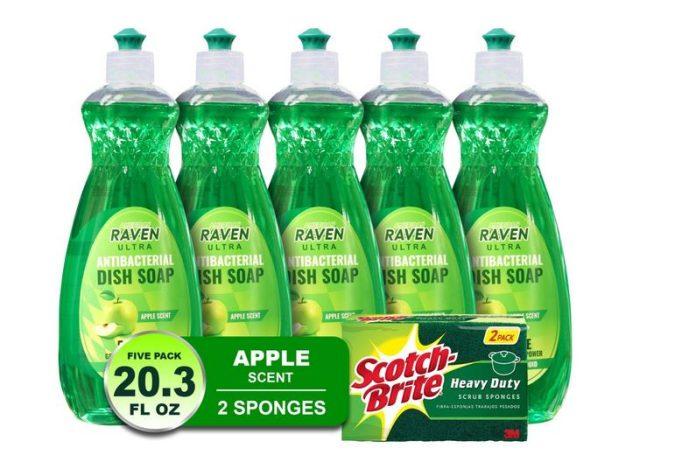In the grand scheme of household essentials, dish soap often goes unnoticed. Yet, this unassuming bottle plays a critical role in our daily lives, ensuring clean dishes and a safe environment for food preparation. This article delves into the science behind dish soap, explores its various types and their applications, and offers valuable tips for choosing the right dish soap for your needs.
Beyond Bubbles: The Science of Sudsy Cleanliness
Dish soap cleaning power lies in its unique composition. Here’s a breakdown of the key ingredients and how they work together:
- Surfactants: These are the workhorses of dish soap. They are amphiphilic molecules, meaning they have one end that attracts water (hydrophilic) and another that attracts oil and grease (lipophilic). This allows surfactants to break down grease and dirt on dishes, suspending them in water for easy rinsing.
- Builders: These ingredients help soften hard water, allowing the surfactants to work more effectively. They also neutralize acids and bases, creating an optimal cleaning environment.
- Solvents: Some dish soaps contain solvents that help dissolve stubborn food residues, such as baked-on cheese or caramelized sugar.
- Fragrances and Dyes: These add a pleasant scent and visual appeal to the dish soap, but they don’t play a role in the actual cleaning process.
By working synergistically, these ingredients create a powerful cleaning solution that effectively removes grease, grime, and food particles from your dishes.
A Sea of Options: Exploring Different Types of Dish Soap
Dish soap comes in various formulations, each catering to specific needs and preferences. Here’s a look at some common types:
- Liquid Dish Soap: This is the most popular type, offering a versatile cleaning solution for everyday dishes. It comes in a variety of scents and formulations, including concentrated options for economical use.
- Dishwashing Detergent: Primarily formulated for automatic dishwashers, these detergents are often concentrated and may contain enzymes to break down food particles. They are not recommended for handwashing due to their potential for skin irritation.
- Antibacterial Dish Soap: These soaps contain ingredients that claim to kill bacteria on dishes. While they may offer some additional protection, regular dish soap and hot water are generally sufficient for effective cleaning and sanitization.
- Natural Dish Soap: These eco-friendly soaps are formulated with plant-based ingredients and are often biodegradable. They may be a good option for those with sensitive skin or environmental concerns.
When choosing a dish soap, consider your needs, preferences, and budget. For everyday cleaning, a mild liquid dish soap is usually sufficient. If you have hard water, a dish soap with built-in softeners might be beneficial. For heavily soiled dishes, consider a concentrated formula or a dish soap with added solvents.
Lathering Up for Success: Tips for Effective Dishwashing
To maximize the effectiveness of your dish soap and achieve sparkling clean dishes, follow these tips:
- Pre-rinse: Scrape off large food particles before washing. A quick pre-rinse removes excess food debris and prevents it from redepositing on your dishes during washing.
- Hot Water is Your Friend: Hot water helps activate the surfactants in dish soap, making them more effective at cutting through grease. However, avoid using excessively hot water on delicate items.
- Lather Up: Apply a generous amount of dish soap to your sponge or dishcloth to create a good lather. This allows the soap to reach all surfaces of your dishes.
- Scrub Wisely: Pay particular attention to areas with stubborn grease or food residue. Use a scrub brush for heavily soiled pots and pans.
- Rinse Thoroughly: Rinse your dishes with clean, hot water to remove all soap residue and food particles. Rinse twice if necessary, especially for dishes that will be used for food storage.
- Air Dry or Towel Dry: Let your dishes air dry on a drying rack for optimal hygiene. Alternatively, use a clean dish towel to dry them.
By following these simple practices and choosing the right dish soap, you can ensure your dishes are not only clean and grease-free but also safe for food preparation.
Conclusion: A Squeaky Clean Future with Dish Soap
Dish soap is an essential household product that plays a crucial role in maintaining hygiene and a healthy environment for food preparation. Understanding its science, exploring different types, and following effective dishwashing techniques empower you to harness the power of dish soap to keep your dishes sparkling clean and your family safe. So, the next time you reach for that bottle of dish soap, remember – it’s a humble hero silently working behind the scenes to ensure a clean and healthy kitchen.
